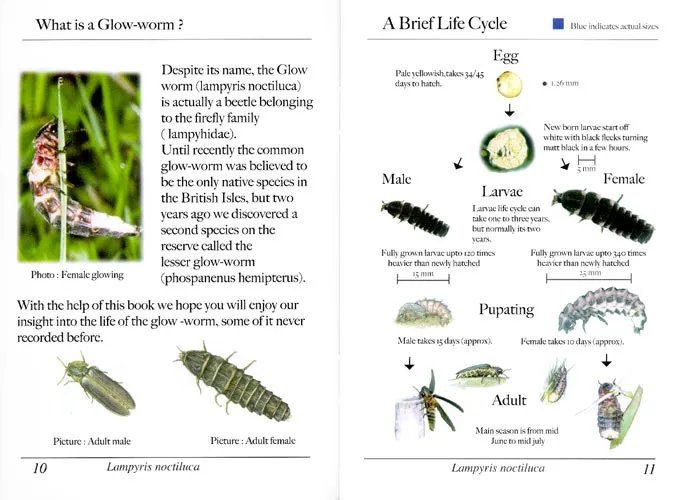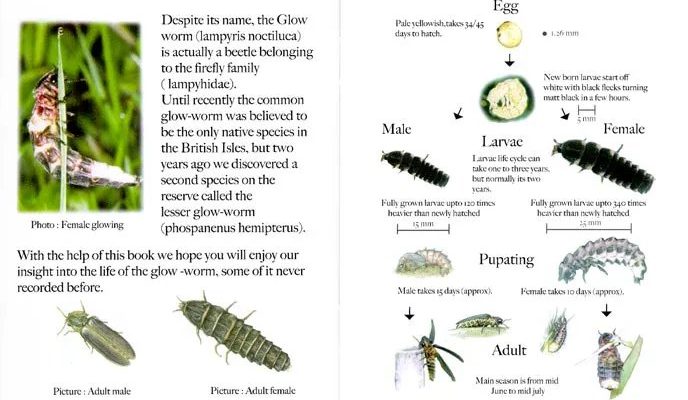
You might be wondering what makes glow worms so different from fireflies. Well, the truth is that they belong to distinct families of insects, each with its own individual quirks. Think of glow worms as the quieter, more mysterious members of this glowing club, while fireflies are like the lively party-goers lighting up the night. In this article, we’ll break down the differences between them—so grab your favorite drink, settle in, and let’s illuminate this topic!
What Are Glow Worms?
Glow worms are a bit of a misnomer. They’re not actually worms at all but larval forms of certain beetles, primarily from the family Lampyridae. You can find them clinging to damp surfaces like rocks or beneath leaves in dark, humid environments. Glow worms produce light through a chemical reaction in their bodies, which is called bioluminescence. This process is similar to how fireflies create their glow, but the two insects achieve it in unique ways.
The light emitted by glow worms is often bluish-green and serves a specific purpose. In many species, it attracts moths and other insects, which become entranced by the glow. Once they come close enough, the glow worms can catch them using sticky silk threads they spin—somewhat like a spider weaving a web. This fascinating method of hunting makes them stand out among glowing insects.
On the other hand, glow worms are primarily found in certain regions, particularly in New Zealand and Australia. In fact, the famous Waitomo Caves in New Zealand host stunning displays of these creatures, drawing visitors from around the world. Just imagine walking through a dark cave, lit up by thousands of tiny, twinkling lights!
What Are Fireflies?
Fireflies, or lightning bugs, belong to the family Lampyridae as well, but they come in a variety of shapes and colors. You’ll typically spot them during warm summer nights as they flit around backyards or fields, flashing their bioluminescent lights. Unlike glow worms, fireflies are adults that use their glowing abilities to communicate and attract mates.
Fireflies produce light using a special chemical called luciferin, which reacts with oxygen in their bodies. This reaction happens in their lower abdomen, allowing them to flash their lights in patterns. Each species has its unique light pattern, which helps them find partners. So, when you see a firefly blink in the dark, it’s doing more than just showing off—it’s trying to find love!
Fireflies are found in various habitats, from moist areas near water to open fields and forests. Their glow not only serves as a romantic signal but also helps deter predators. The light can signal to potential threats that they are unpalatable, making fireflies a fascinating example of nature’s protective strategies.
Life Stages and Development
Both glow worms and fireflies go through several life stages, but they have some distinct differences during their development. Glow worms typically start as eggs, which hatch into larvae. These larvae can live several months or even years, depending on the species and environmental conditions. During this time, they rely on their bioluminescent glow to attract prey.
In contrast, fireflies also begin as eggs, but they grow into larvae that do not glow—at least not in the same way as adults. These firefly larvae can live in the soil or leaf litter. They feed on small snails, slugs, and other soft-bodied invertebrates. After several weeks or months, they pupate and eventually emerge as adult fireflies, ready to light up the night sky.
One interesting fact is that glow worms, as larvae, often remain in the same location for extended periods, whereas firefly larvae are more mobile, searching for food as they grow. This difference affects their behavior and how we experience these two enchanting creatures.
Habitat Preferences
When it comes to habitat, glow worms and fireflies have different needs and preferences. Glow worms thrive in dark, damp environments like caves, forests, and even under rocks. They prefer areas with plenty of moisture since their survival is closely linked to the humidity in their surroundings. That’s why you’ll often find them in lush, green places where they can easily trap their prey.
On the other hand, fireflies are more adaptable and can thrive in a variety of habitats. You might see them in your backyard, parks, meadows, or even near slow-moving streams. Fireflies require a warm environment, so they usually appear in late spring and summer when temperatures rise. They also need moisture, but they’re not as restricted to damp places as glow worms are.
Since their habitat preferences vary, you might find fireflies buzzing around during a summer barbecue while glow worms stay hidden away in the dark corners of a cave. This difference in habitat is essential for the survival and reproduction of both types of glowing insects.
Behavior and Communication
Behaviorally, glow worms and fireflies communicate through their respective glowing mechanisms, but they have different purposes and methods. Glow worms primarily emit light to attract prey. When an unsuspecting insect wanders into the area, the glow worm’s sticky silk threads capture it, providing a meal for the glow worm. Their glowing is more about survival than social interaction.
Fireflies, however, use their flashes to communicate with one another. As mentioned earlier, each species has its unique flashing pattern that helps males and females recognize each other. This courtship dance often involves males performing a series of light flashes to catch the attention of prospective mates. It’s almost like a romantic light show in the dark!
Interestingly, fireflies can also use their light for defense. The flashes they emit can signal to predators that they’re not worth eating due to their unpleasant taste. This dual purpose of attraction and repulsion makes their glowing behavior even more fascinating.
Why It Matters
Understanding the differences between glow worms and fireflies isn’t just a fun trivia topic; it’s also essential for conservation efforts. Many species of glow worms and fireflies are facing threats from habitat destruction, pollution, and climate change. These enchanting creatures play vital roles in their ecosystems, contributing to biodiversity and the health of their environments.
By raising awareness about these insects and their habitats, we can encourage conservation and protection efforts. After all, you might not realize it, but preserving their environments helps maintain the balance of nature. Plus, who wouldn’t want to keep enjoying those magical summer nights lit up by twinkling fireflies and glowing glow worms?
In summary, both glow worms and fireflies bring a sense of magic to the night, but they each have their own distinct characteristics. From their life stages and habitat preferences to their unique behaviors, these glowing insects remind us just how diverse and fascinating the natural world can be. So, next time you see that flickering light on a summer evening, take a moment to appreciate the beauty and complexity behind it!

